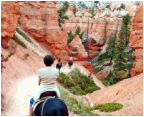4th Grade Social Studies
Utah Core Social Studies Standards
Standard 1: Students will understand the relationship between the physical geography in Utah and human life.
Classify major physical geographic attributes of Utah.
|
ISTE Standards Addressed:
Technology Links for teaching standard 1 via Utah Education Network (UEN).
|

Standard 2- Students will understand how Utah's history has been shaped by many diverse people, events, and ideas.
Describe the historical and current impact of various cultural groups on Utah. Technology Resources for S2 Objective 1
Technology Resources for S2 Objective 2
Technology Resources for S2 Objective 3
|
ISTE Standards AddressedTechnology Resources for teaching Standard 2 via Utah Education Network (UEN)
|

